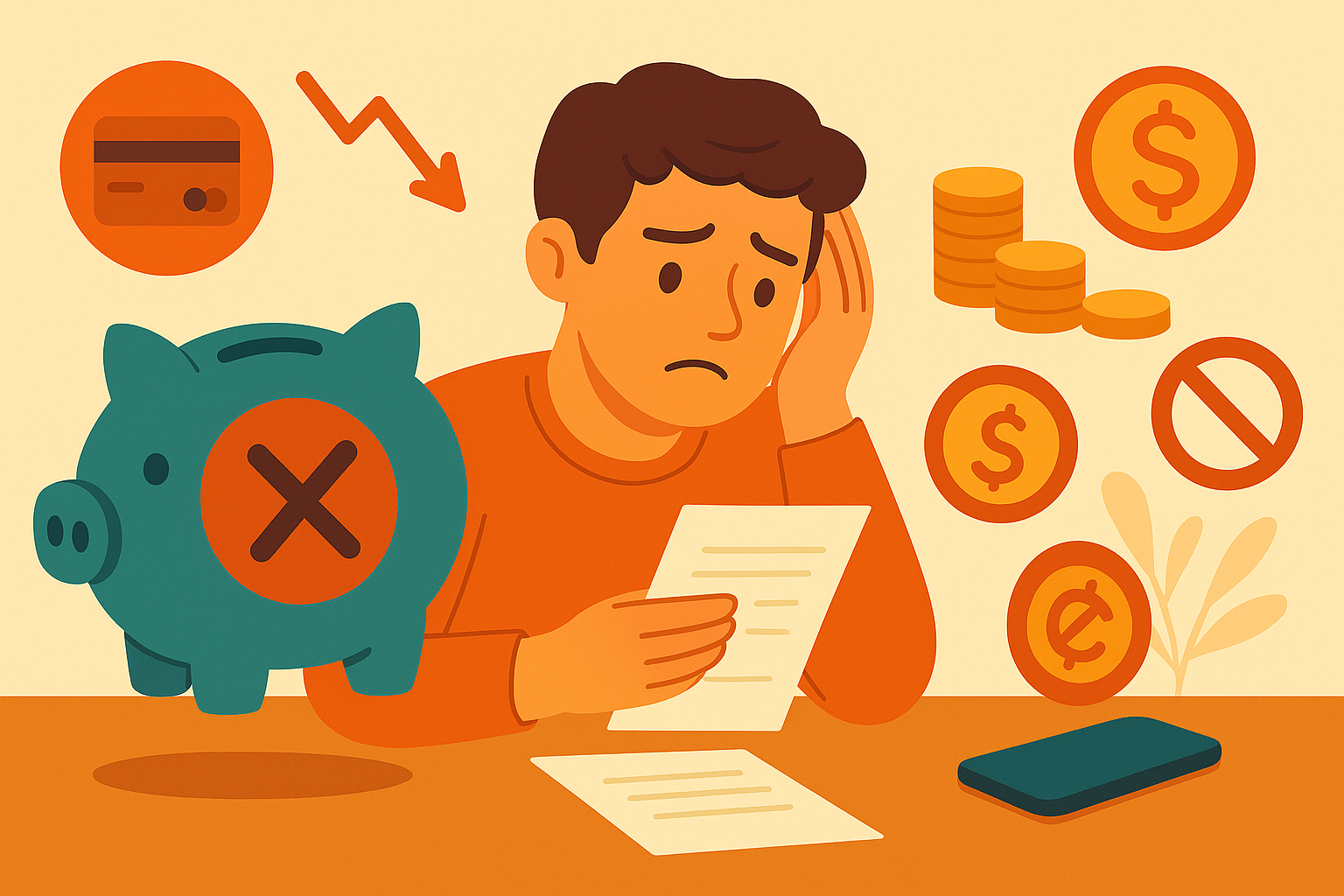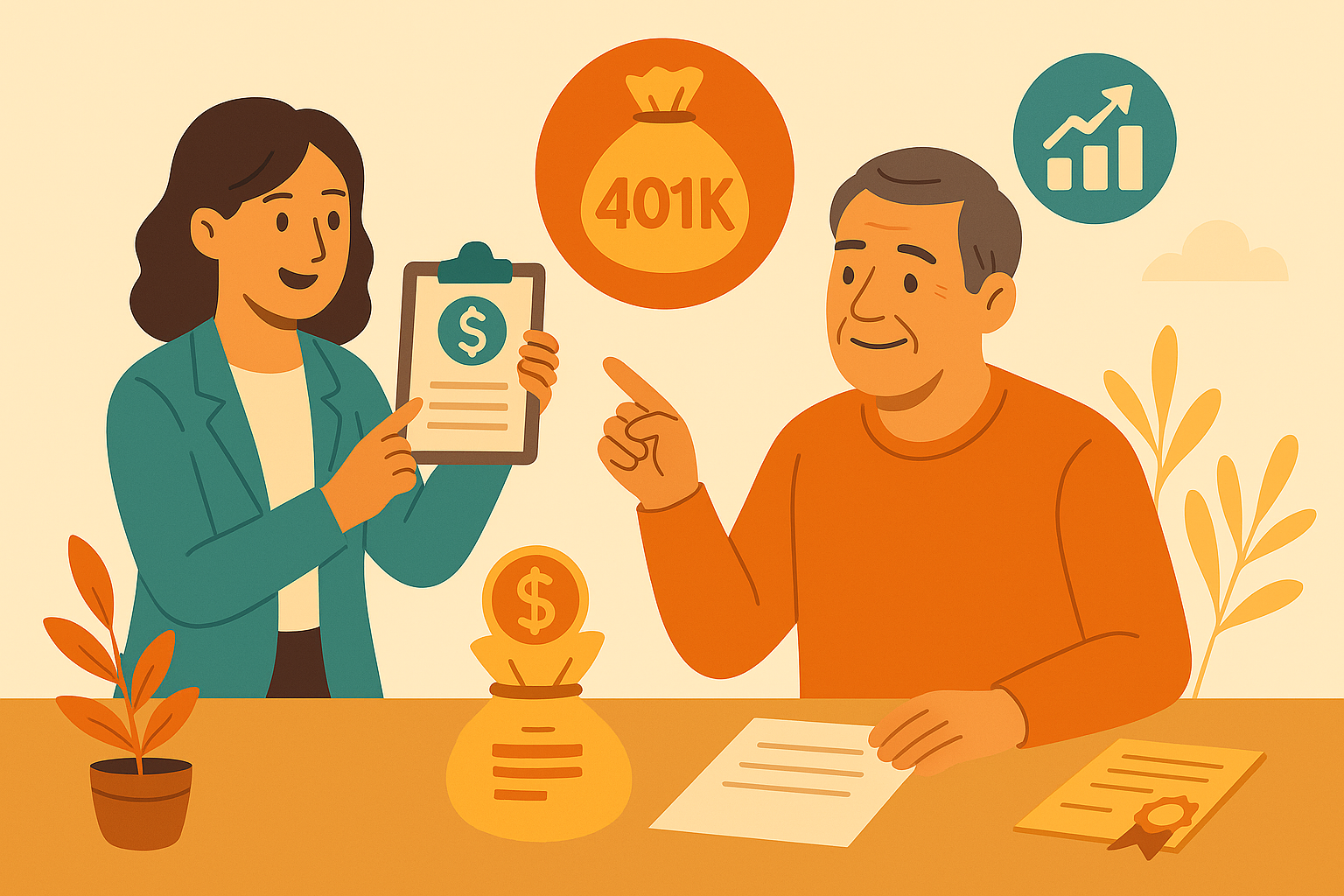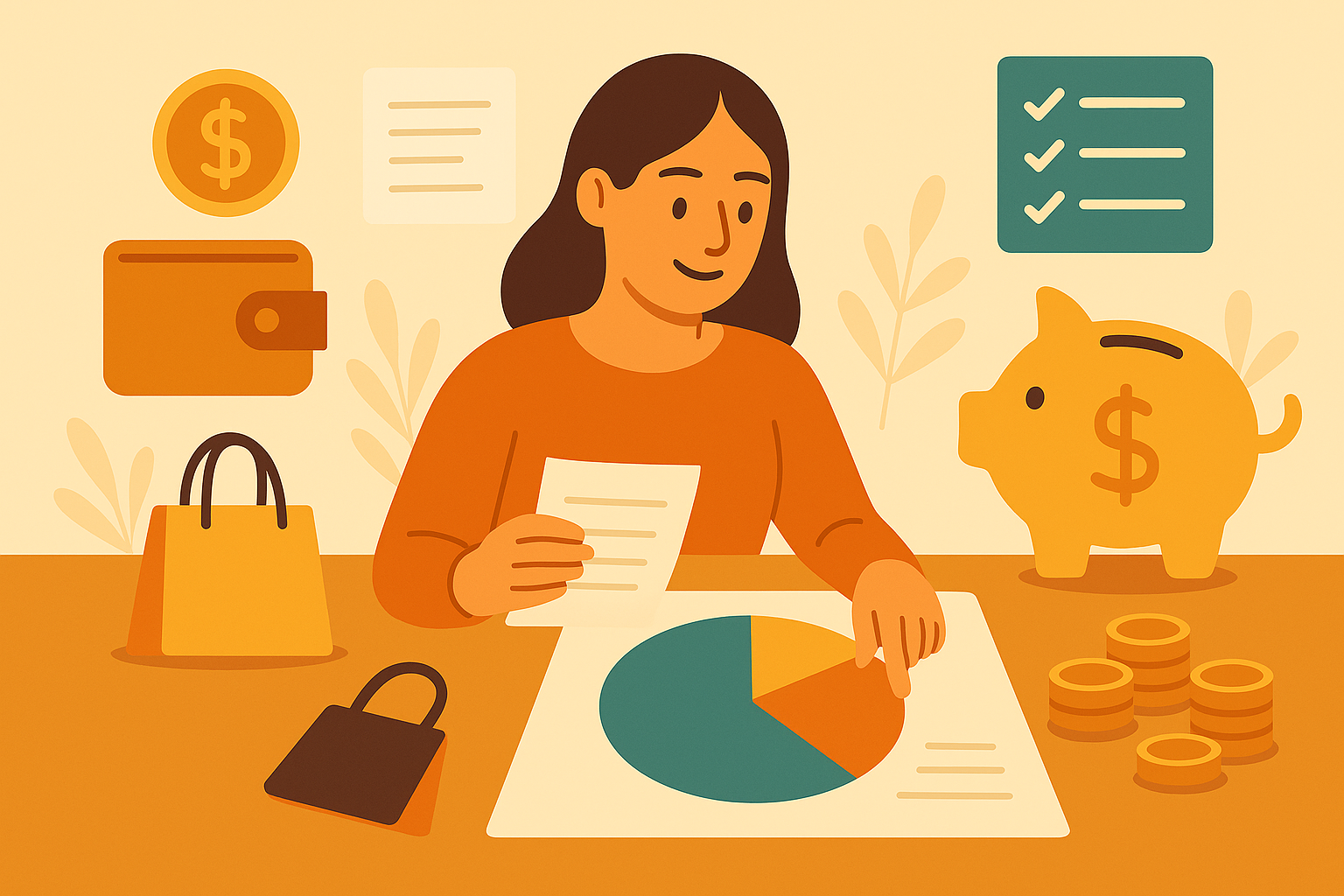Remember that feeling when you finally had $1000 sitting in your bank account that wasn’t already spoken for? Maybe it was a tax refund, a work bonus, or the result of months of cutting back on those daily coffee runs. Whatever the source, you’re probably wondering: should I invest this money, or is $1000 too small to even bother?
Here’s the truth: investing your first $1000 is one of the smartest financial moves you can make, and it’s way easier than you think. You don’t need to be a Wall Street expert or understand complex financial jargon. You just need to know where to start and what steps to take.
In this guide, I’m going to walk you through exactly how to invest your first $1000, including where to put your money, what investment options make the most sense for beginners, and how to avoid the common mistakes that trip up new investors.
Before You Invest: Is Your First $1000 Ready for Investing?
Hold up—before we dive into investment strategies, let’s make sure investing is actually the right move for your $1000 right now.
I know it’s exciting to think about growing your money, but there are a few financial basics you should have in place first. Think of these as the foundation of your financial house. You wouldn’t build a second story before making sure the ground floor is solid, right?
Do You Have Any High-Interest Debt?
If you’re carrying credit card debt with interest rates of 15% or higher, you’ll want to tackle that before investing. Why? Because even if you find an amazing investment that returns 10% per year, you’re still losing money if you’re paying 20% interest on debt.
Paying off high-interest debt IS an investment—it’s just an investment in yourself. You’re guaranteed to “earn” whatever interest rate you’re being charged by eliminating that debt.
Do You Have an Emergency Fund?
This is huge. Before you invest your first $1000, you should have at least a small emergency cushion saved up. I’m talking about $500 to $1000 set aside in a regular savings account for unexpected expenses like car repairs or medical bills.
If you don’t have any emergency savings yet, consider splitting your $1000. Put half in a high-yield savings account as your emergency fund starter, and invest the other $500. That way, you’re building both security and wealth at the same time.
Understanding Your Investment Options for $1000
Now that we’ve covered the foundation, let’s talk about where you can actually put your $1000 to work. The good news is that you have more options than ever before, and many platforms have eliminated minimum investment requirements.
Index Funds: The Best Friend of Beginner Investors
If I could only recommend one investment option for your first $1000, it would be index funds. These are like the Honda Civic of investing—reliable, affordable, and perfect for getting you from point A to point B.
An index fund is basically a collection of stocks that tracks a specific market index, like the S&P 500. Instead of trying to pick individual winning companies, you’re buying a tiny piece of hundreds of companies all at once. This gives you instant diversification, which is a fancy way of saying you’re not putting all your eggs in one basket.
The beauty of index funds is that they’re low-cost and historically have delivered solid returns over time. You’re not trying to beat the market; you’re just matching it. And honestly, that’s good enough for most people.
ETFs: Index Funds’ Cooler Cousin
Exchange-traded funds, or ETFs, are similar to index funds but trade like stocks throughout the day. For your first $1000, ETFs can be a great choice because many brokerages allow you to buy them commission-free.
Popular ETFs for beginners include ones that track the S&P 500, total stock market funds, or even specific sectors if you want to tilt toward something like technology or healthcare. The key is to stick with broad, diversified ETFs rather than trying to get fancy with niche investments.
Robo-Advisors: Investing on Autopilot
Not interested in choosing your own investments? That’s totally fine. Robo-advisors are automated investment platforms that do the heavy lifting for you.
You answer a few questions about your goals, risk tolerance, and timeline, and the robo-advisor creates a diversified portfolio for you. Then it automatically rebalances and manages everything. Most robo-advisors have low or no minimum investments, making them perfect for your first $1000.
Popular options include Betterment, Wealthfront, and even major brokerages like Vanguard and Fidelity offer robo-advisor services. The fees are typically low—around 0.25% per year—and you get professional portfolio management without needing to understand the nitty-gritty details.
Individual Stocks: Proceed with Caution
I’m going to level with you: using your first $1000 to buy individual stocks is risky. Not because investing in stocks is inherently bad, but because when you’re just starting out, you might not have the experience to choose winning companies.
If you really want to try stock picking, consider putting most of your $1000 into index funds or ETFs, and using $100-200 to experiment with individual stocks. That way, you can learn without putting your entire investment at risk.
Step-by-Step: How to Actually Invest Your First $1000
Enough theory—let’s get practical. Here’s exactly how to invest your first $1000, broken down into simple steps you can follow today.
Step 1: Choose Your Investment Platform
First, you need to open a brokerage account. This is where you’ll actually buy and hold your investments. The good news is that most major brokerages have eliminated commissions and minimum deposit requirements.
Some popular options include Fidelity, Charles Schwab, Vanguard, and E*TRADE. If you want something simpler with a robo-advisor, check out Betterment or Wealthfront.
When choosing a platform, look for:
- No account minimums or low minimums
- No trading commissions on stocks and ETFs
- Good educational resources for beginners
- Easy-to-use mobile app
Don’t overthink this part. Any of the major platforms will work fine for getting started. You can always transfer your investments later if you want to switch.
Step 2: Decide Between a Taxable Account and a Retirement Account
This is an important decision. You have two main options for where to hold your investments:
A regular taxable brokerage account gives you complete flexibility. You can withdraw your money anytime without penalties, but you’ll pay taxes on your investment gains.
A retirement account like a Roth IRA offers tax advantages but has restrictions on when you can withdraw money. With a Roth IRA, you invest after-tax money, and your investments grow completely tax-free. You can withdraw your contributions (not earnings) anytime without penalty, and after age 59½, you can withdraw everything tax-free.
For your first $1000, I’d lean toward a Roth IRA if you’re thinking long-term and won’t need the money soon. The tax-free growth is incredibly powerful over decades. But if you think you might need this money in the next few years, stick with a regular taxable account.
Step 3: Choose Your Investment Strategy
Now for the fun part—deciding what to actually buy. For your first $1000, I recommend keeping it simple with one of these approaches:
The All-in-One Approach: Buy a single target-date retirement fund or total market index fund. These are designed to be your complete investment portfolio in one fund. For example, Vanguard’s Target Retirement 2060 Fund automatically adjusts from aggressive to conservative as you get closer to retirement age. With $1000, you can invest in one fund and be completely diversified.
The Three-Fund Portfolio: Split your $1000 across three types of investments—U.S. stocks (60%), international stocks (30%), and bonds (10%). This gives you broad diversification across different asset classes and geographic regions. You can do this with just three low-cost index funds or ETFs.
The Robo-Advisor Route: Deposit your $1000 into a robo-advisor platform, complete their questionnaire, and let them build and manage a diversified portfolio for you. This is the ultimate set-it-and-forget-it option.
My personal recommendation for most beginners? Start with a total stock market index fund or ETF. Put your entire $1000 into something like VTI (Vanguard Total Stock Market ETF) or FSKAX (Fidelity Total Market Index Fund). You get instant diversification across thousands of companies, and it’s dead simple to manage.
Step 4: Actually Make the Investment
Once you’ve chosen your strategy, it’s time to execute. Log into your brokerage account, search for your chosen fund or ETF, and place your order.
If you’re buying an ETF, you’ll enter the number of shares you want to buy. Your brokerage will show you the total cost based on the current share price. Make sure you leave a little cash cushion in your account since ETF prices fluctuate throughout the day.
If you’re buying a mutual fund, you can typically invest the exact dollar amount you want. Just enter $1000, and they’ll calculate the number of shares for you.
Don’t stress about timing the market perfectly. When you’re starting with $1000, the most important thing is just getting invested. Time in the market beats timing the market.
What to Expect After You Invest Your First $1000
Let’s set realistic expectations. If your $1000 grows at the stock market’s historical average of around 10% per year, you’d have about $1100 after one year. Not exactly life-changing, right?
But here’s the thing: investing your first $1000 isn’t really about that first $1000. It’s about building the habit of investing and starting your wealth-building journey. It’s about learning how markets work, understanding your own risk tolerance, and proving to yourself that you can be an investor.
That first $1000, combined with regular monthly contributions and time, can grow into something substantial. If you invest $1000 initially and add $200 per month for 30 years at 10% average annual returns, you’d have over $450,000. That’s the power of compound growth.
Moving Forward: What’s Next After Your First $1000
Once you’ve invested your first $1000 and feel comfortable with the process, here’s what to focus on next:
Continue making regular contributions to your investment accounts. Even small amounts add up significantly over time thanks to compound interest.
Gradually increase your financial literacy. You don’t need to become a finance expert, but learning the basics about asset allocation, tax-advantaged accounts, and different investment types will help you make better decisions.
As your portfolio grows, you might want to refine your investment strategy. Maybe you’ll add international stocks, real estate investment trusts, or bonds to balance risk. But there’s no rush—you can stick with a simple strategy for years and do just fine.
Most importantly, stay consistent. Investing isn’t about making perfect decisions; it’s about making good-enough decisions consistently over time.
You’re Ready to Invest Your First $1000
Investing your first $1000 might feel intimidating, but it’s honestly one of the best financial decisions you can make. You’re not just investing money—you’re investing in your future self and building skills that will serve you for decades.
Start with a simple strategy, stay consistent with contributions, avoid emotional decisions during market swings, and give your money time to grow. That’s really all there is to it.
The hardest part is taking that first step. Once you do, you’ll wonder why you didn’t start sooner. Your future self will thank you for starting today rather than waiting for the “perfect” time or the “right” amount of money.
So what are you waiting for? That $1000 isn’t going to invest itself. Pick a platform, choose a simple investment strategy, and get started today. You’ve got this!






